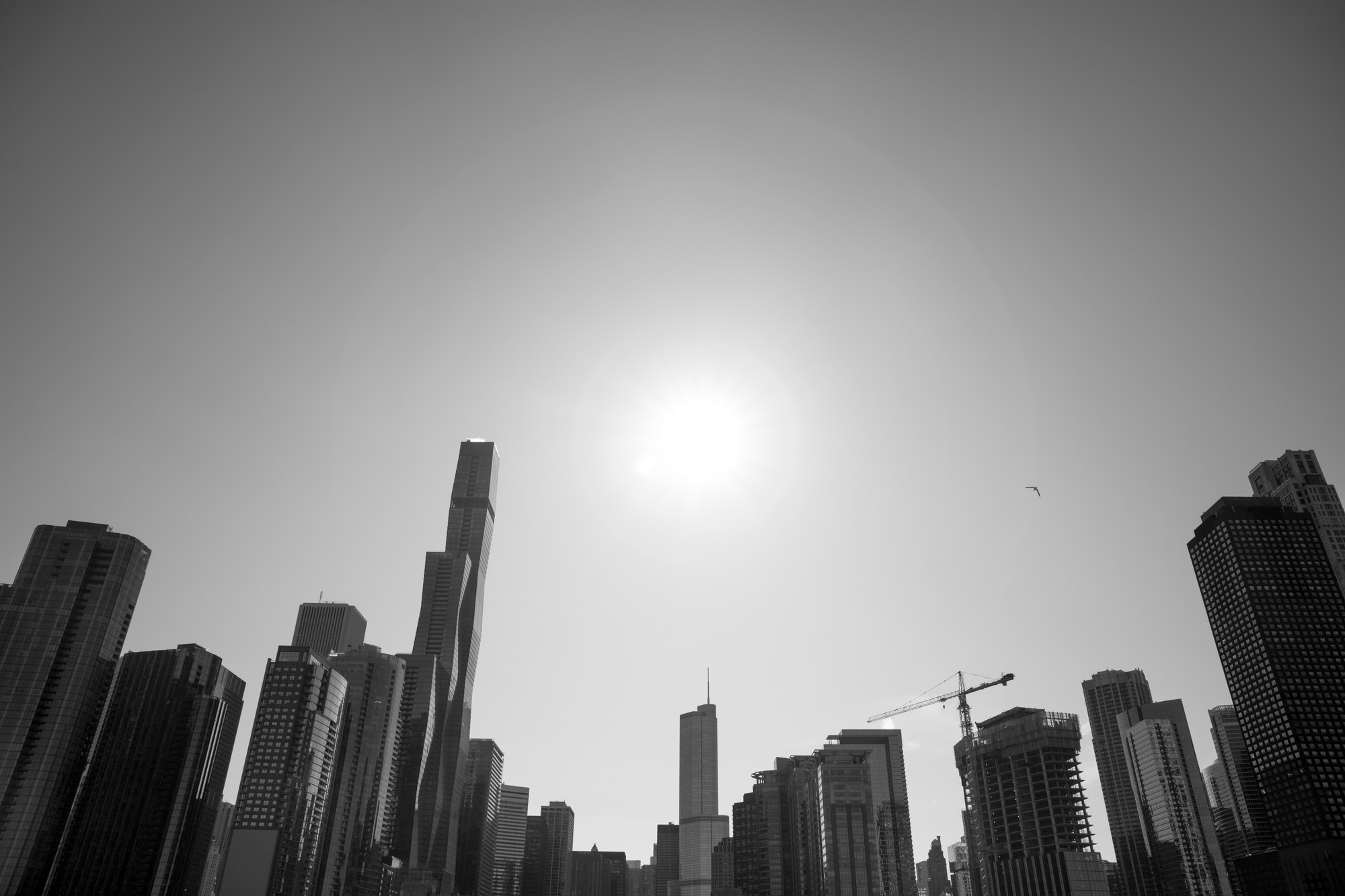As described by our tour guide, Josh, Chicago is an architectural buffet of historic buildings. From iconic filming locations as seen in “The Dark Knight” and “Ferris Bueller’s Day Off” to masterfully designed feats of engineering that include the 150 North Riverside Plaza and the “Hot Pocket” building, these skyscrapers stand as mile-high works of art. Join the Odyssey Cruises River Vessel as it sails along the winding rivers of the Windy City filled with rich histories, complex construction and beauty beyond measure — discounting the actual metric height of the buildings himself.
Photo Gallery:
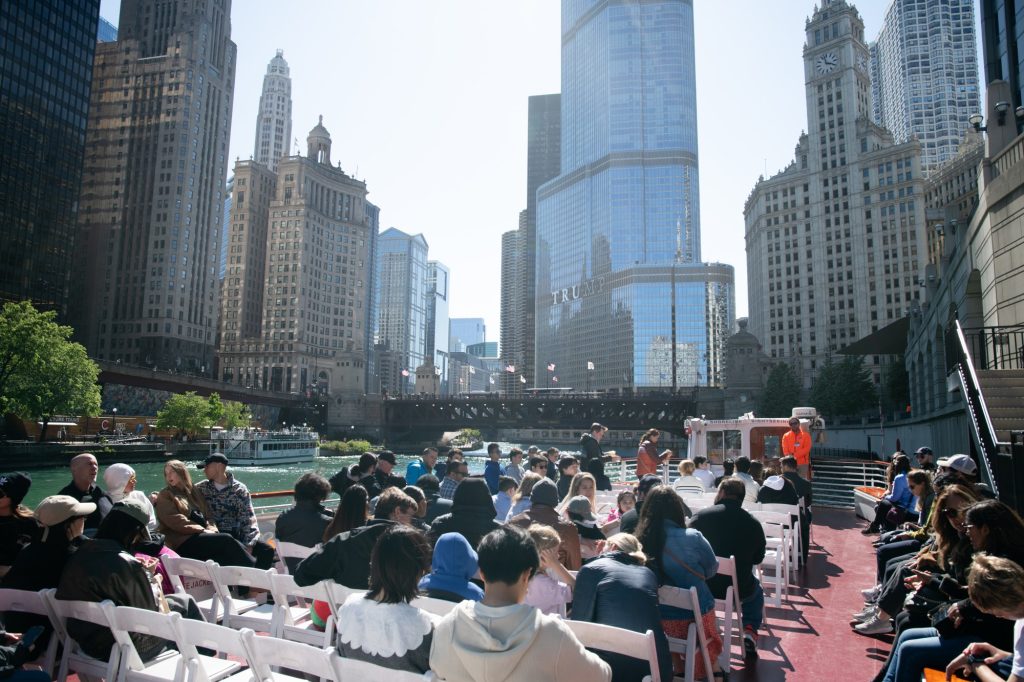
Riders load in on the top deck of the river cruise. The two decker ship begins its tour between the Michigan and Columbus bridges. Photographed by Finn Martin/BruinLife.
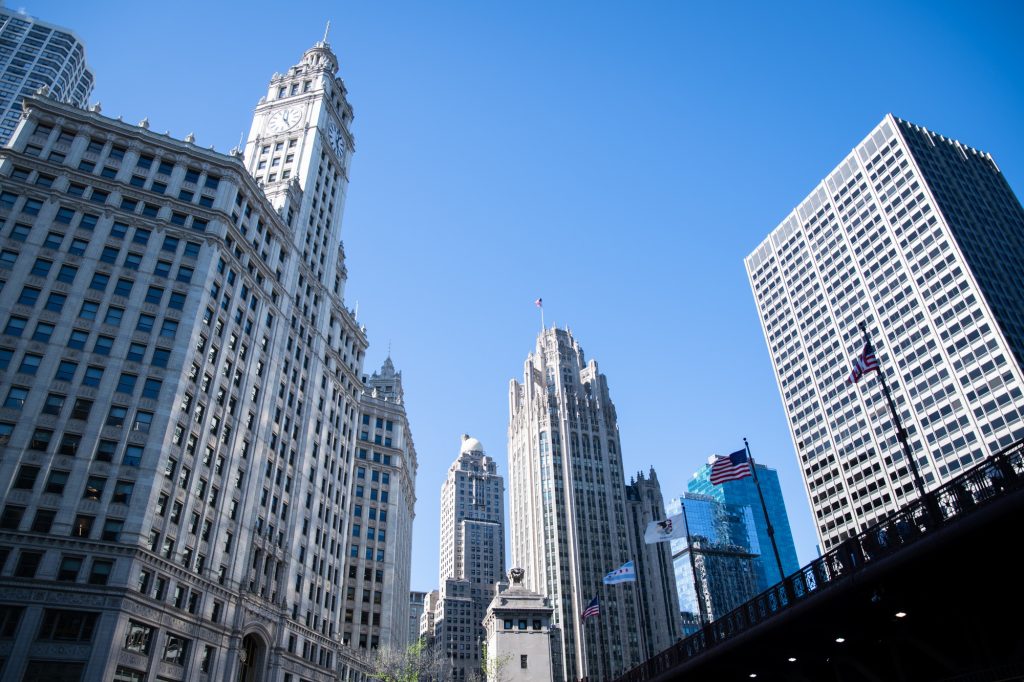
The Wrigley Building, seen center here, was raised in a Spanish Revival design that was patterned after Seville's Cathedral Giralda Tower. Photographed by Finn Martin/BruinLife.
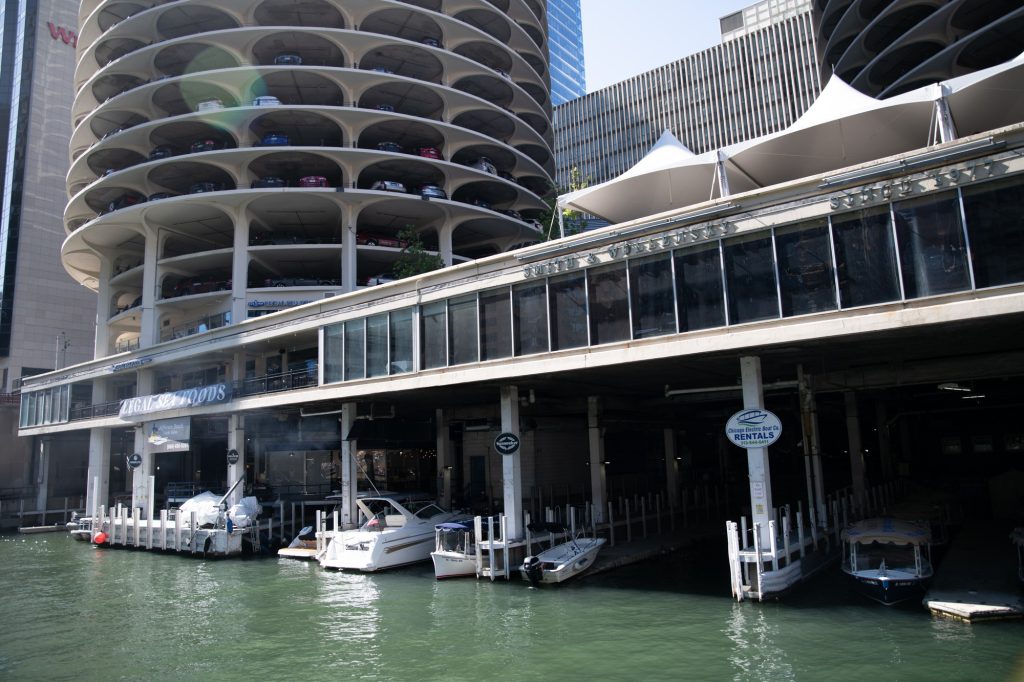
It was not uncommon for residential buildings to have a commercial zone at their ground level that was followed by a lower dock. It was also not uncommon to hear that living in boats was a popular option for some Chicagoans. Photographed by Finn Martin/BruinLife.
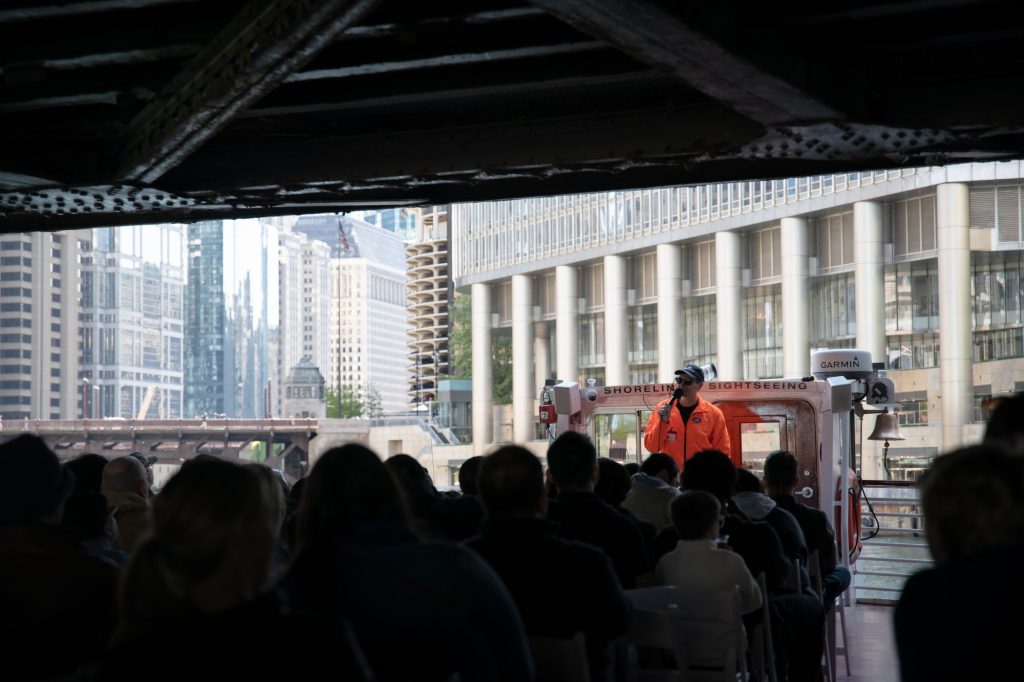
Josh the guide addresses the crowd as we pass underneath another bridge. Keep your arms and legs in the boat at all times else you'll risk it all. Photographed by Finn Martin/BruinLife.
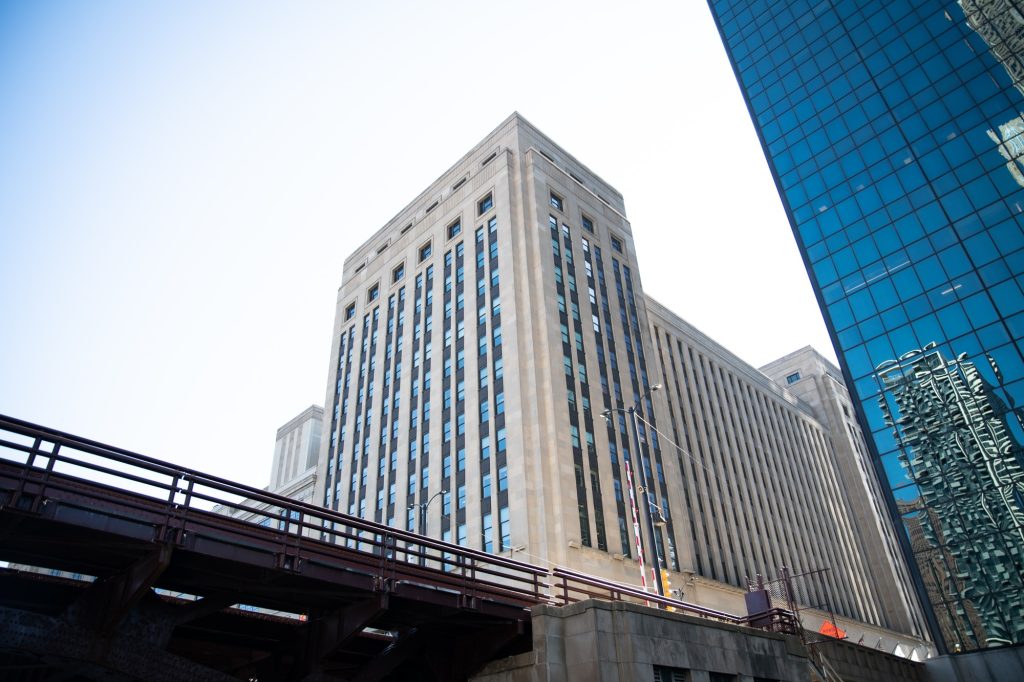
Once the largest Post Office building in the United States, this building was immediately recognized by tour guide and by Gavin as the set location where the Joker robbed his first bank in the Dark Knight. Photographed by Finn Martin/BruinLife.
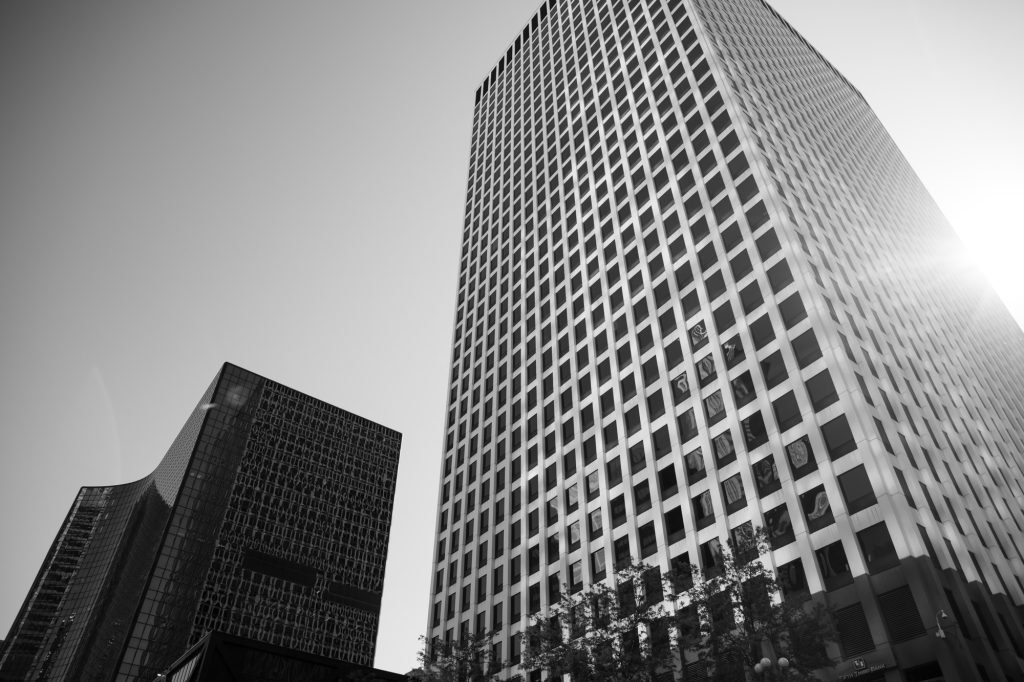
The white building and the black building. Two new styles that became popular after the Second World War in Chicago for their low investment costs. Photographed by Finn Martin/BruinLife.

Many buildings in Chicago reflect the Art Deco 1910s and 1920s style. The inset window panels were meant to convey a kind of comfortable opulence. Photographed by Finn Martin/BruinLife.
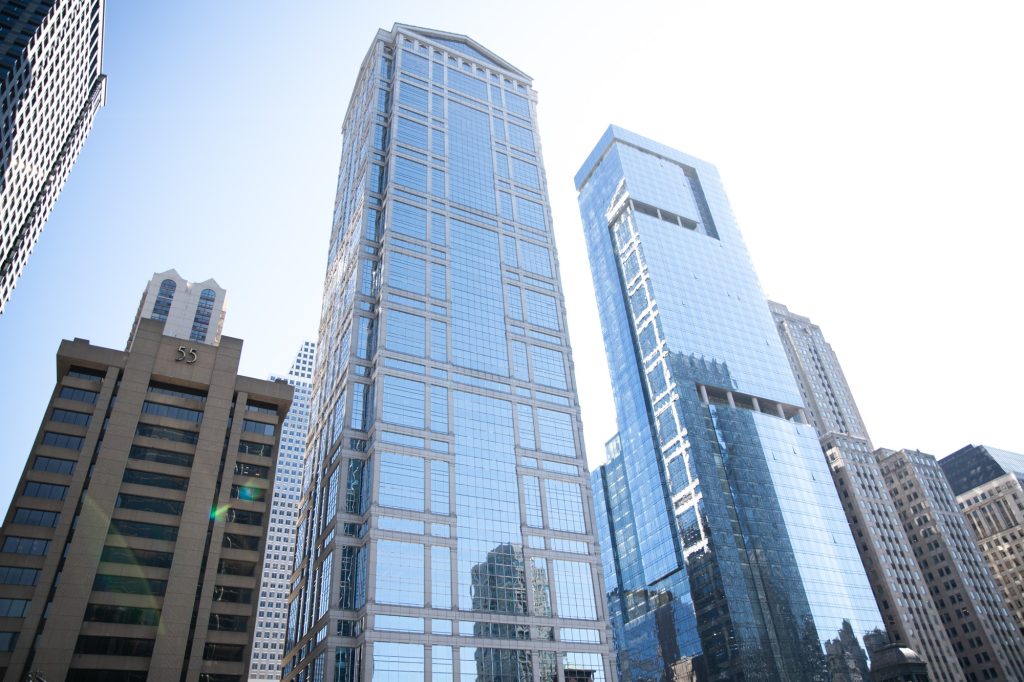
The skyscraper on the left reflecting the blue sky was designed in the postmodern style to emulate the Greek Parthenon. To that building's left is building 55, a stout, brutalist scraper. Photographed by Finn Martin/BruinLife.
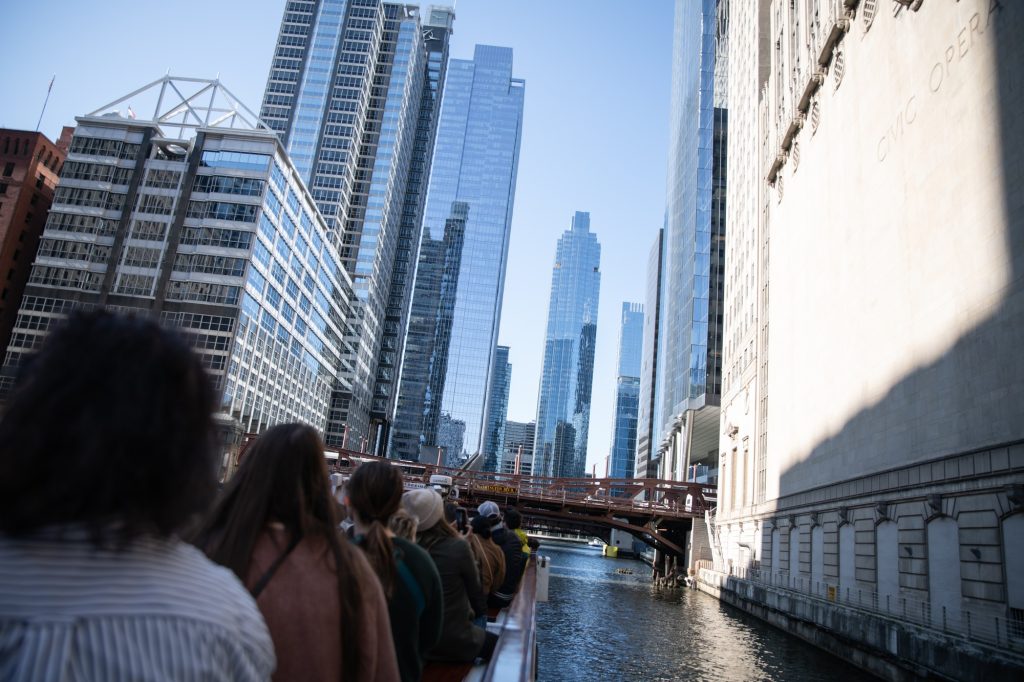
Many buildings along the Chicago River were built right at the river's edge without windows facing out onto the water, mostly for disgust of the river's poor quality in the pre 20th century. The boat passes by the Civic Opera building here. Photographed by Finn Martin/BruinLife.
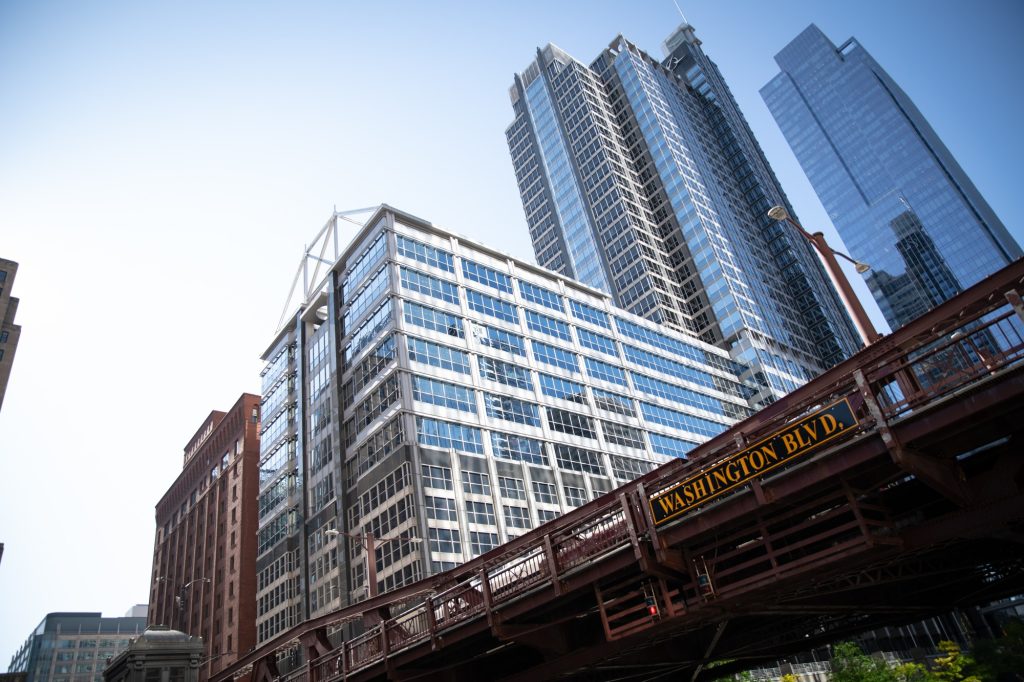
Crossing beneath the Washington Blvd bridge, the river boat tour begins to reach a view of Sears Tower, seen in the background. Elevated trains cruise over a few of the Chicago River bridges. Photographed by Finn Martin/BruinLife.
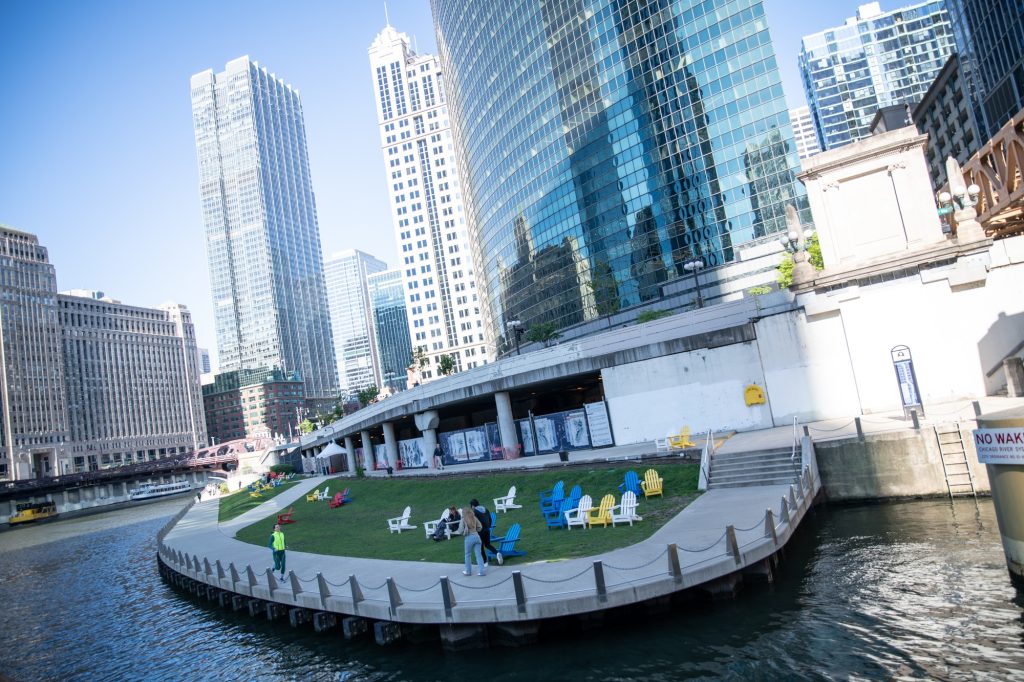
The Chicago River is mostly wrapped on both sides by an accessible river walk that offers green spaces as pictured and an ample helping of bars and restaurants. The building rising above the green lawn was designed in a contextual style that wraps the façade to mimic the river's bend. Photographed by Finn Martin/BruinLife.
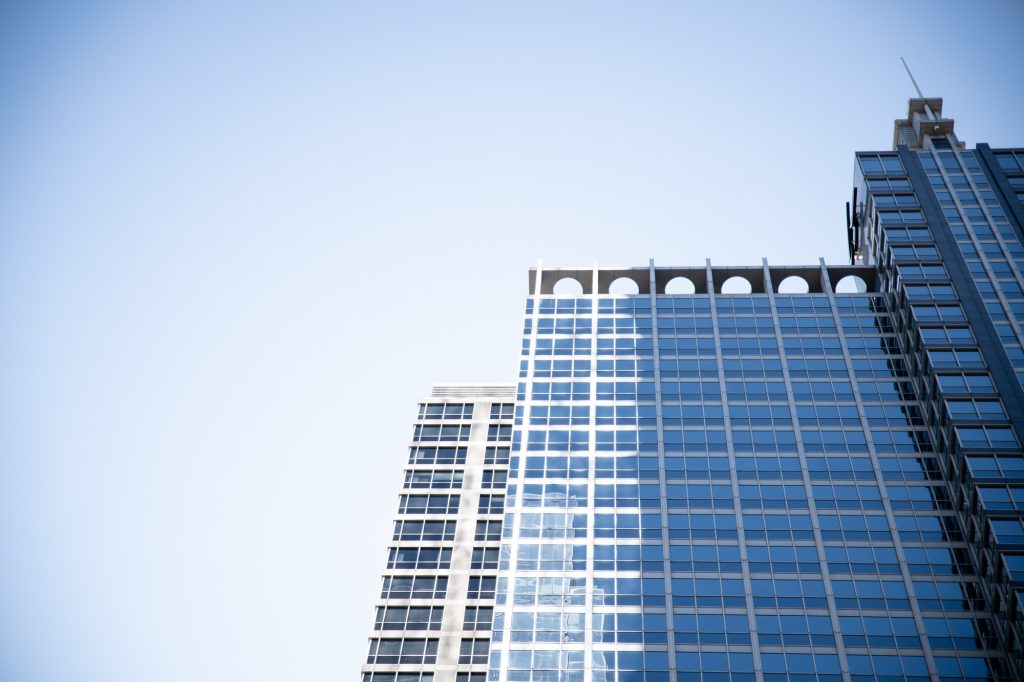
The top of this building was designed, cheekily, to resemble the holes in a salt shaker. Photographed by Finn Martin/BruinLife.
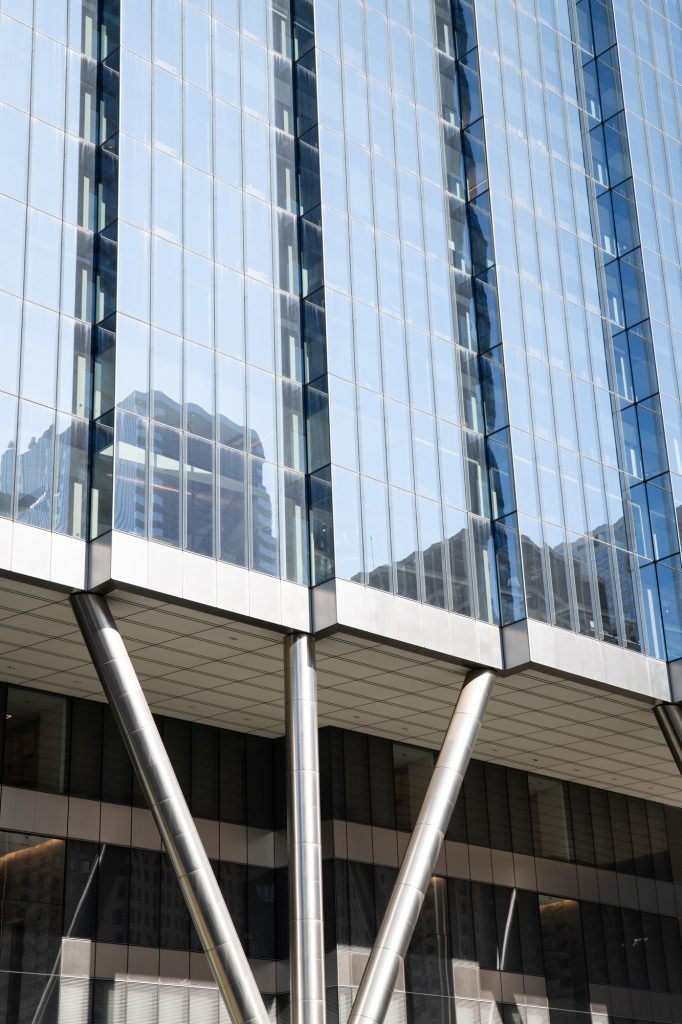
City ordinance has forced many skyscrapers along the riverbank to allow for 60 feet of inset, untouched space on the ground between the river and their building for structural reasons. As a result, some buildings like this one have come up with creative designs, like pillars, that use the 60 feet of space in other ways for their building's structure. Photographed by Finn Martin/BruinLife.
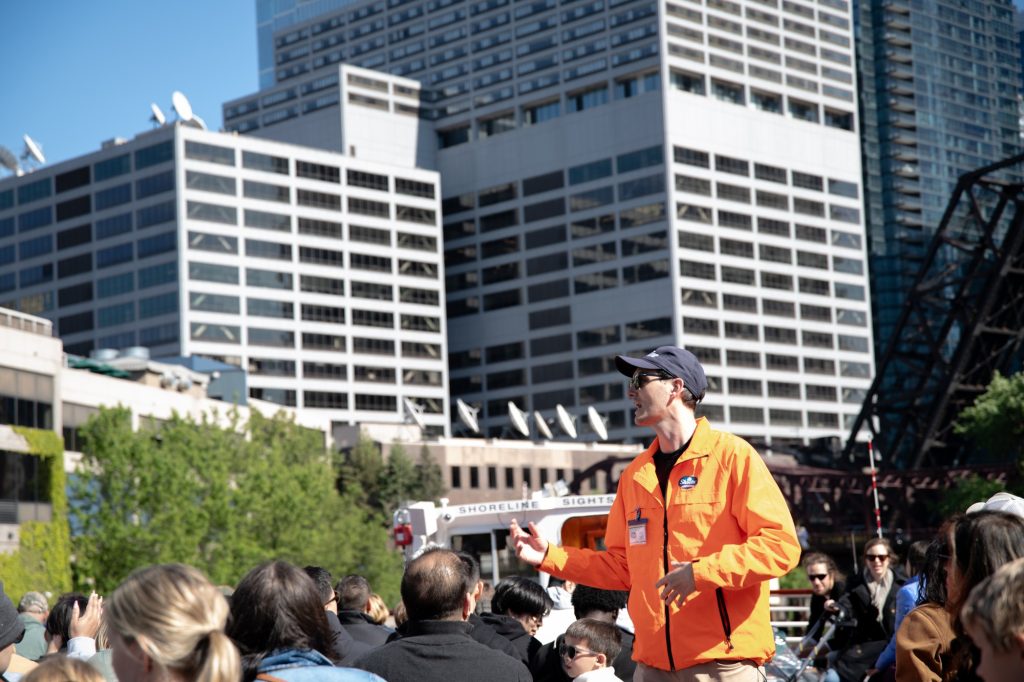
Josh, our guide, got his start on Chicago's Broadway in the theatre before transitioning to the river tour business. Photographed by Finn Martin/BruinLife.

One of the last skyscrapers seen at the Lake Michigan side Chicago River South Branch. Photographed by Finn Martin/BruinLife.
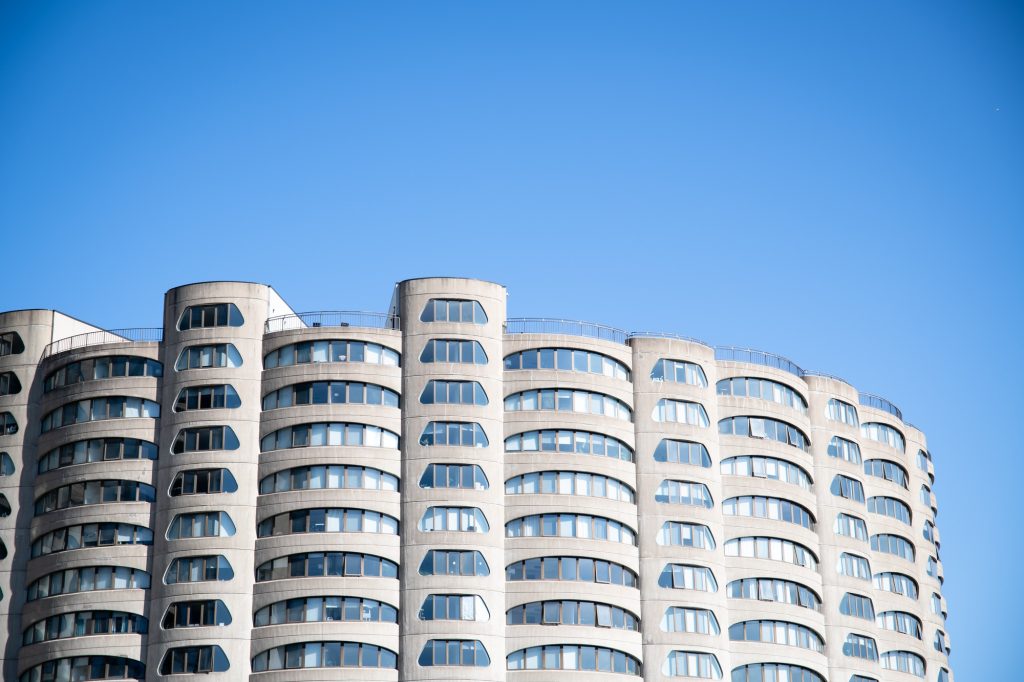
Luxury condos curve outwards with wide windows looking over the South Branch of the Chicago River. Photographed by Finn Martin/BruinLife.

This residential addition built along the South Branch of the Chicago River was designed so that its canted roof would resemble the sails of Lake Michigan boats. Photographed by Finn Martin/BruinLife.
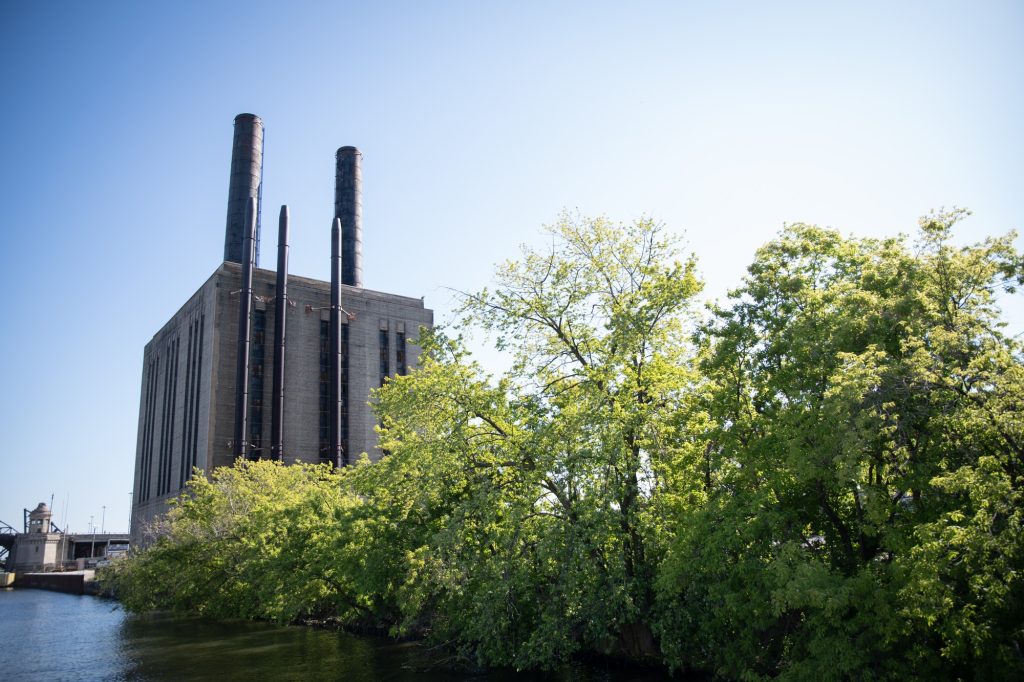
Near the Lake Michigan bound to the Chicago River are found stories of the 1893 Chicago World Fair. Photographed by Finn Martin/BruinLife.
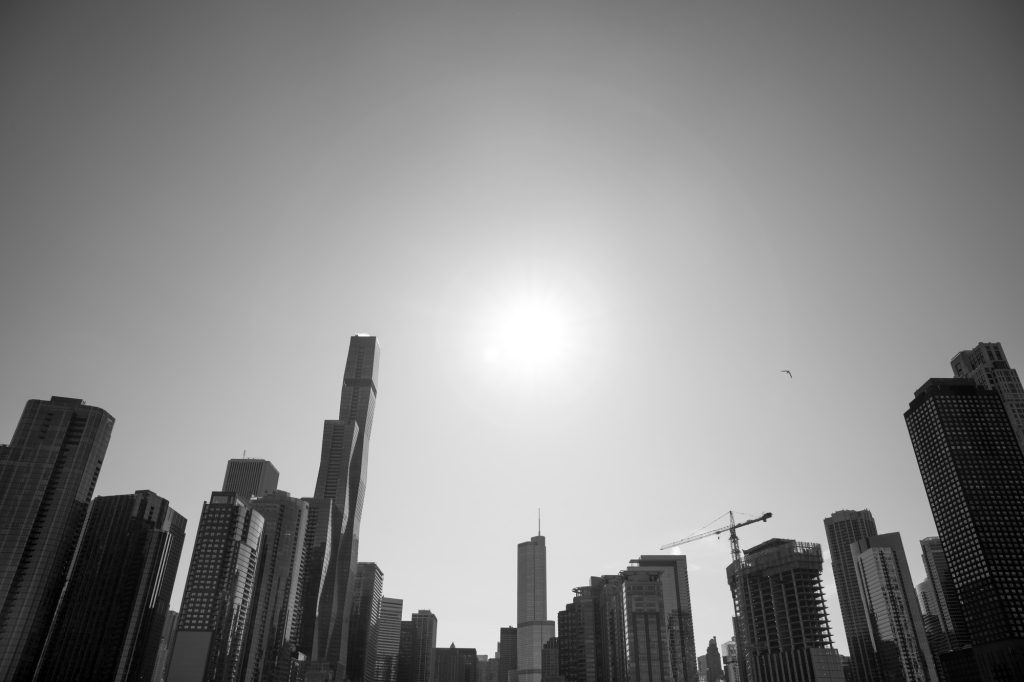
The river boat tour wraps its route at the boundary line built to regulate flow between the Chicago River and Lake Michigan. From here, with a little dramatic pause, the boat stops to allow passengers to take in the skyline view of Chicago. Photographed by Finn Martin/BruinLife.

